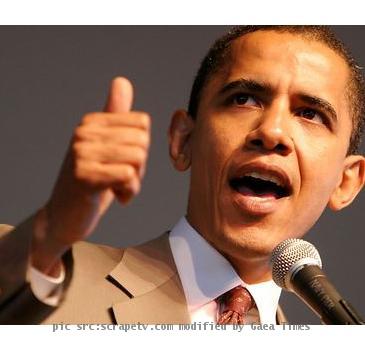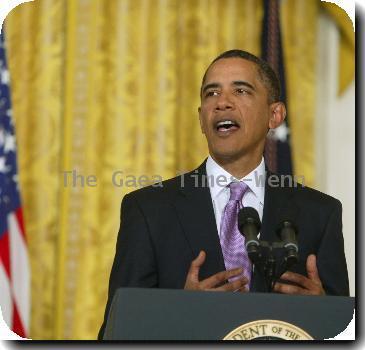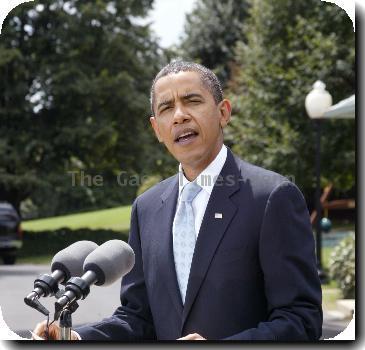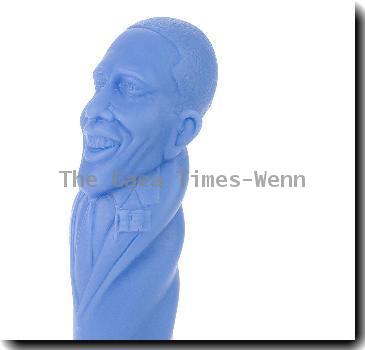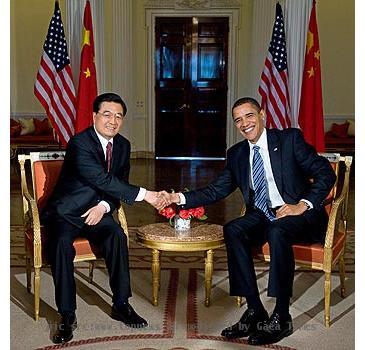NKorea confirms Kim Jong Il’s not-so-secret trip to China; no sign or mention of son
By Jean H. Lee, APMonday, August 30, 2010
NKorea confirms Kim’s not-so-secret trip to China
SEOUL, South Korea — After Kim Jong Il’s safe return, North Korea confirmed what for days had been clear: the Dear Leader was on a not-so-secret trip to northeastern China.
Kim hobnobbed with top Chinese officials, including President Hu Jintao, toured factories and paid a nostalgic trip down Kim family memory lane, according to Chinese and North Korean state media — possibly, rumor had it, accompanied by the son many believe is being groomed to succeed him as North Korea’s next leader.
There was no sign of Kim Jong Un, the 20-something son said to be in his favor, and there was no mention of him in either nation’s dispatches about the five-day trip that ended Monday and was shrouded in typical secrecy.
Still, signs that the North Korean regime is laying the groundwork for a succession movement abounded in the 68-year-old Kim’s pointedly patriotic and strategic trip by train through northeastern China.
China remains North Korea’s chief ally and benefactor, supplier of troops when the Korean War broke out 60 years ago and its main source of aid to this day. Beijing’s continued good will is crucial for North Korea since its ailing economy is unable to provide enough food for its people. China provides food assistance and nearly all of North Korea’s oil, and much of Pyongyang’s trade, passes through China.
China is also the place where North Korea founder Kim Il Sung, father of the current leader, sowed his revolutionary roots as a budding guerrilla fighter when his family fled the Japanese occupation of Korea in the 1920s.
Just hours after the announcement that the trip had taken place, the U.S. government expanded sanctions against North Korea on Monday by freezing assets of individuals, companies and organizations allegedly linked to support for Pyongyang’s nuclear program.
The U.S. Treasury Department said President Barack Obama issued an executive order authorizing action against four North Korean individuals, three North Korean companies and five North Korean government agencies. The order took effect Monday.
The targeted entities included one variously known as Office 39, Bureau 39 and Room 39, believed to direct a range of illicit activities in support of the North Korean nuclear program.
Kim’s trip — just weeks after the 60th anniversary of the Korean War and during the 100th anniversary of Japan’s annexation of Korea — served to both solidify North Korea’s ties with its most important ally and to emphasize the Kim family’s patriotic lineage.
North Korea has been building toward pivotal celebrations in 2012 to mark the 100th year of Kim Il Sung’s birth, an occasion that would have been a key time for a regime change. However, time may be running out: Kim reportedly suffered a stroke in 2008, and is noticeably grayer and thinner than in the past.
The fact that Kim, who never flies and rarely travels abroad, was making a second trip to China in four months, gave the trip a sense of unprecedented urgency.
“His purpose is to increase economic and diplomatic assistance from China for his succession process, which is more urgent than before,” said Shi Yinhong, a professor of international relations at Renmin University in Beijing. “This is the center of his concern.”
Shi said the purpose of Kim’s visit was to drum up support from China for the leadership succession, a process that Beijing also wants to see go smoothly. Analysts note that the trip comes just days before North Korea is to hold a Workers’ Party congress next month — the biggest political convention in 30 years.
The last major convention was in 1980, when Kim Jong Il was officially named to a senior Workers’ Party post, and many believe the son similarly may be granted a key party position.
“With the party convention ahead, North Korea was trying to show its people economic and political stability through North Korean-Chinese cooperation, and to use the convention to make steady progress on succession,” said Kim Yong-hyun, an expert on North Korean affairs at Seoul’s Dongguk University.
Pyongyang remains locked in a standoff with Washington over its nuclear weapons program and the March sinking of a South Korean warship, a deadly incident the U.S. and South Korea consider a violation of the armistice signed in 1953. North Korea denies involvement.
In their meeting Friday in the city of Changchun, Kim and Hu discussed the nuclear disarmament talks that North Korea walked away from last year, with Kim telling the Chinese president Pyongyang hopes for an early resumption of the negotiations, China’s state-run Xinhua News Agency said.
Kim was shown embracing Hu in footage aired by China Central Television.
“The North Koreans wanted to show that they want to resolve the nuclear issue through North Korean-Chinese relations,” analyst Kim Yong-hyun said.
Separately, South Korea’s Red Cross said it has offered relief aid to North Korea recover from recent flooding.
The Red Cross sent a message to North Korea’s Red Cross on Tuesday and proposed that Seoul send aid worth 10 billion won (US$8.3 million), Red Cross official Heo Jeong-gu said.
Flooding in August swamped farmland, houses and public buildings in the North’s northwestern city of Sinuiju and adjacent areas.
Associated Press writers Sangwon Yoon in Seoul, South Korea, and Scott McDonald and Gillian Wong in Beijing and AP National Security Writer Robert Burns in Washington contributed to this report.
Tags: Asia, Barack Obama, Beijing, Changchun, China, East Asia, Greater China, Hu Jintao, International Incidents, North America, North Korea, Nuclear Weapons, Political Conventions, Pyongyang, Seoul, South Korea, United States, Weapons Of Mass Destruction
